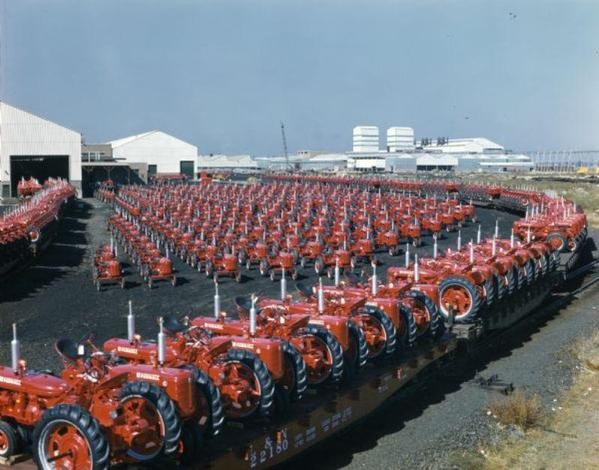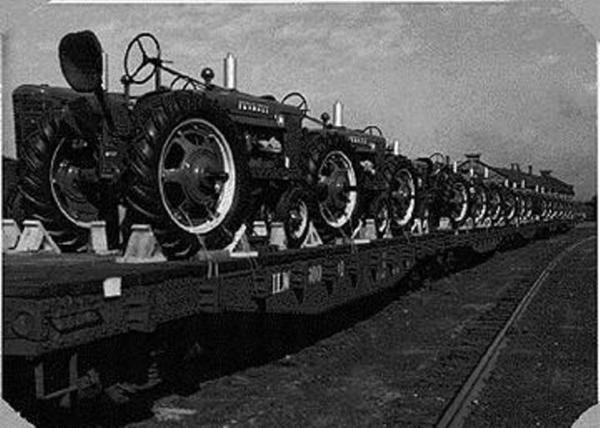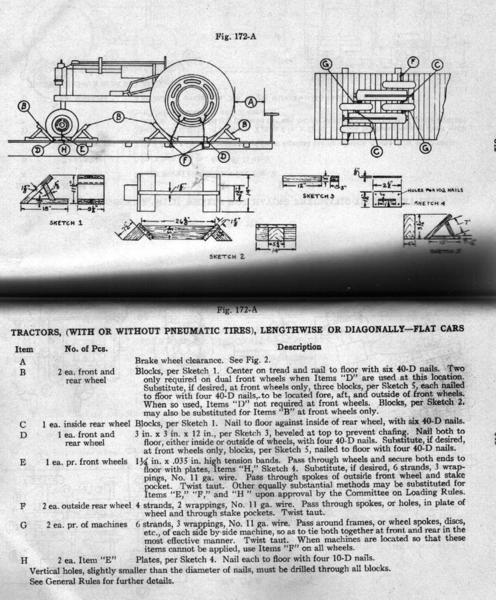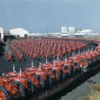i have a need to apply this to a much larger scale than O, but thought i'd also ask if anyone here has done something prototypical for tractors loaded on a flatcar...
not too much loading detail here, but, ...wow!
i will be going with Farmall tractors;
to me the classic red tractor trumps those green or orange machines any day! ![]()
it's much easier to find 1/64th (S scale), but there are some 1:43 models available.
here is a better shot at wood chocks used in securing the load.
not sure where i found this, but it seems to reinforce the wood-chock method.
any other systems you'd care to share?
thanks...gary
















